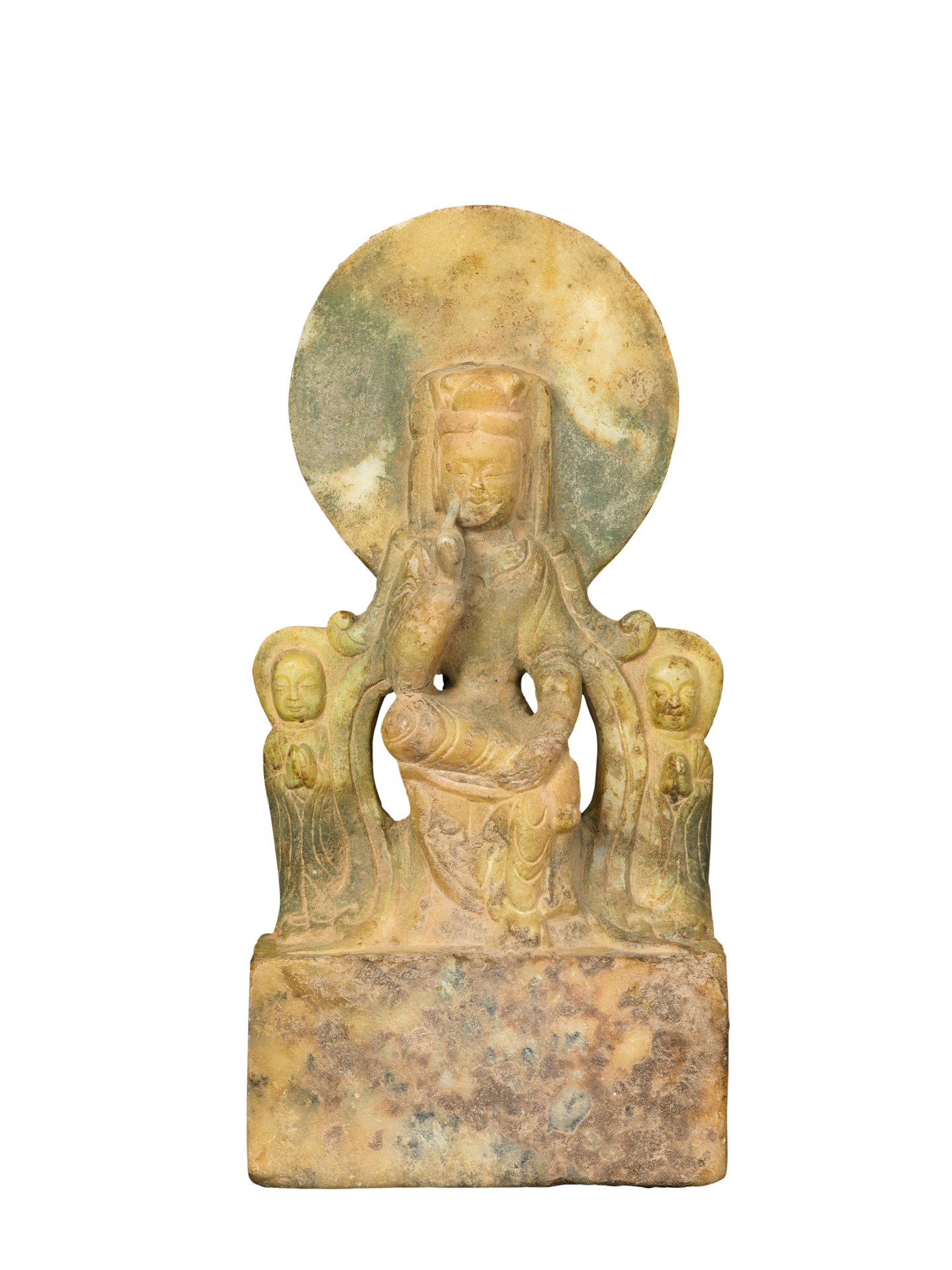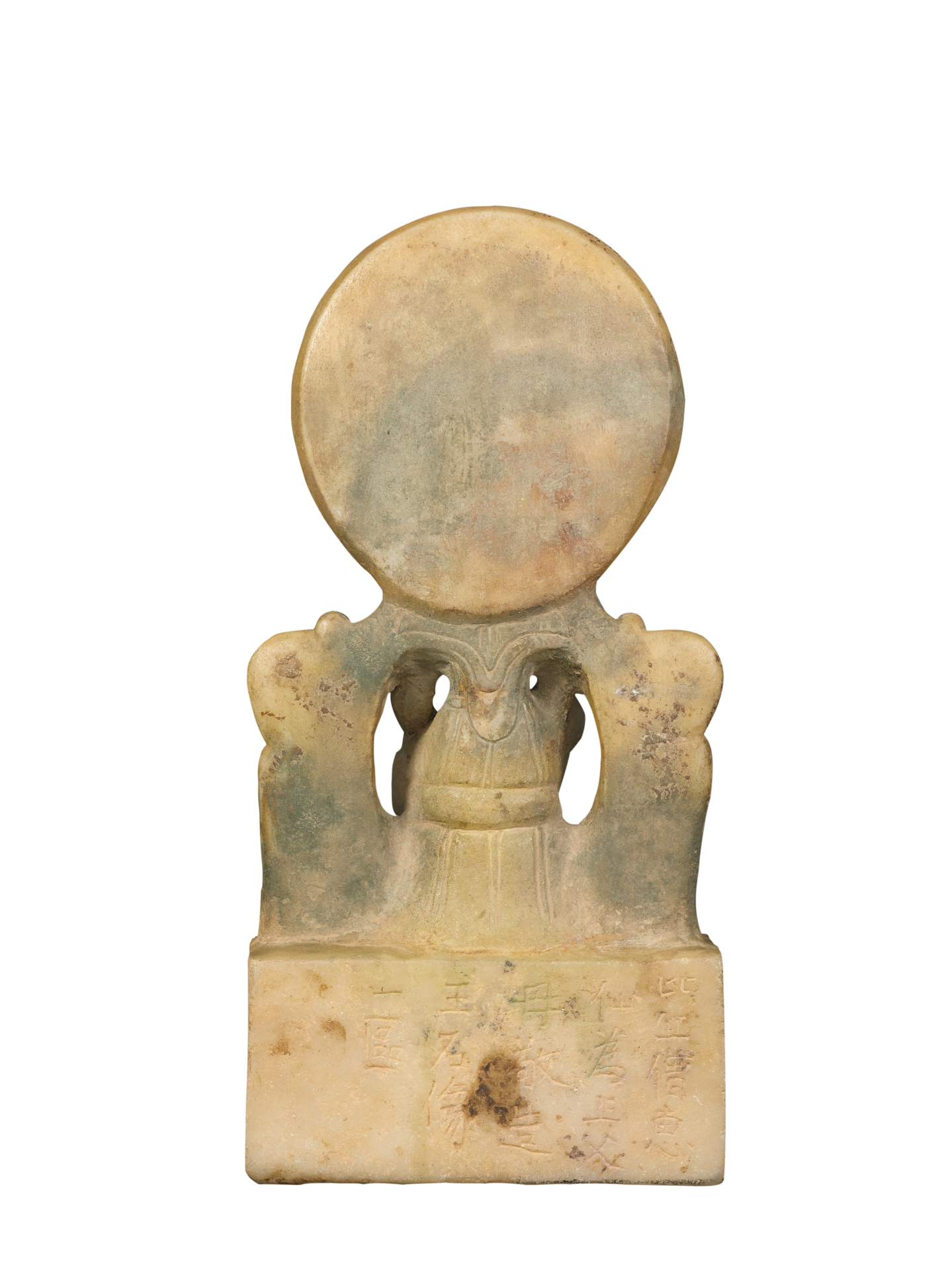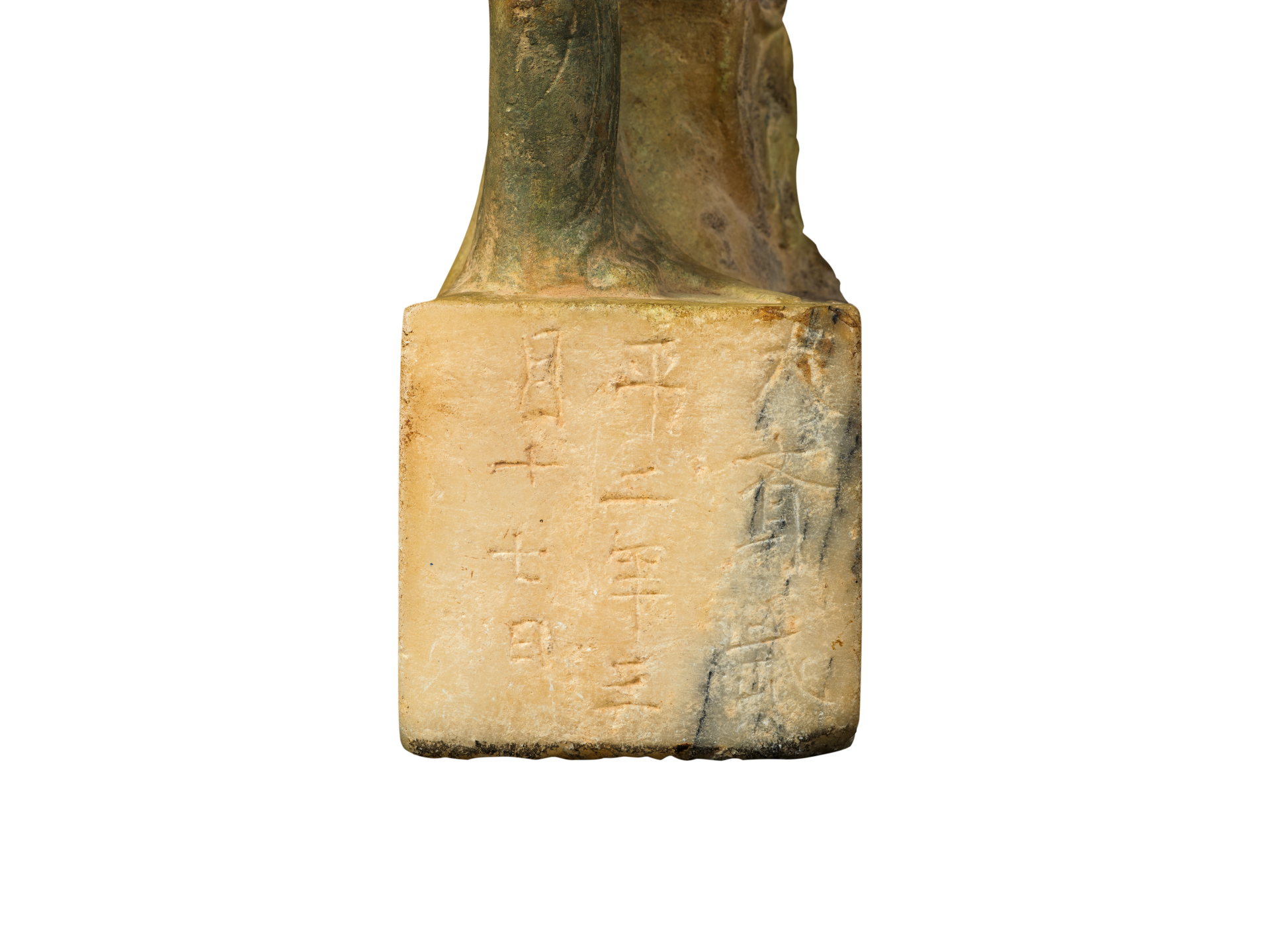Pensive Bodhisattva
The Pensive Bodhisattva refers to a unique iconography in a classic seated and contemplative pose, with one foot hanging down and the other foot placed upon the other knee. On this statue, it is important to note the finger or fingers of one hand are raised against the cheek. This iconography first appeared in the Kushan dynasty (1st-3rd century CE), initially created to portray the young Prince Siddārtha Gautama (later known as Śākyamuni Buddha) out of compassion for sentient beings frequently sat under a tree to contemplate the nature of human life prior to his attainment of Buddhahood. The pose is also associated with Bodhisattva Maitreya.
Pensive Bodhisattva images in China mainly prevailed during the Northern and Southern Dynasties (420-589 CE). They often appear on the upper sections of the interior walls or central-pillars of Mogao Caves of the Northern Liang (397-439 CE) and Northern Wei (439-534 CE) dynasties at Dunhuang, representing Bodhisattva Maitreya preaching in his abode in Tuṣita Heaven. Large numbers of Pensive Bodhisattvas were among the white stone statues unearthed from Xiude Monastery in Quyang, Hebei Province. Among the discoveries were even twin Pensive Bodhisattvas images seated side by side. From the 7th century CE onward, this theme gradually disappeared. However, pensive statues are frequently found among Korean and Japanese Buddhist statuary produced in the 6th and 7th centuries CE due to Chinese influence, indicating the popularity of these statues as objects of worship at that time.
This sculpture presents a Bodhisattva-two disciples Triad presided over by the Pensive Bodhisattva. All three figures have a circular nimbus behind the head. The Bodhisattva has an oblong face, a serene expression with a subtle smile; a three-leaf regal crown upon his head, an exposed upper body draped with a shawl, and a long skirt around the lower body. The drapery is indicated by double incised lines around the legs, fan-shaped folds along the hem of the skirt, and wavy pleats at the edges. The acolyte disciples have proportionately larger heads, simple incised details on their body, as well as a naïve and adorable countenance.


